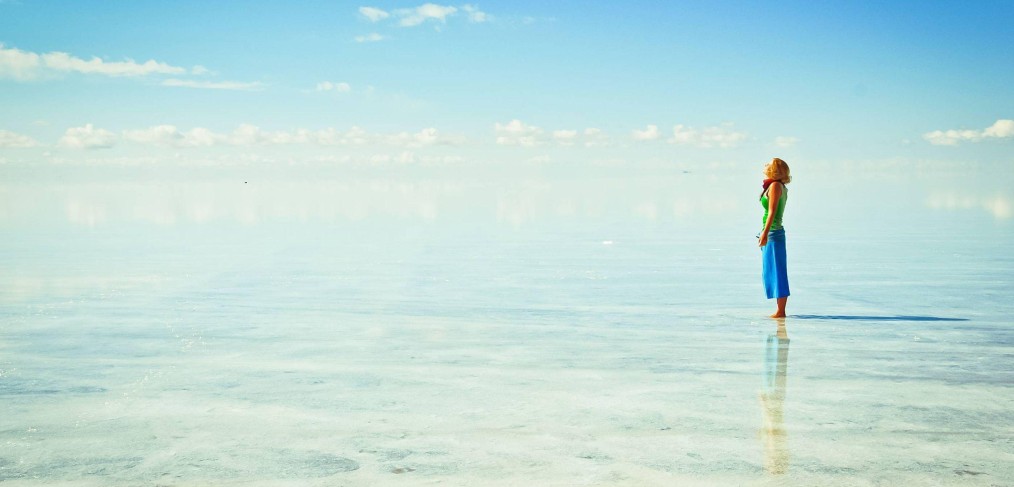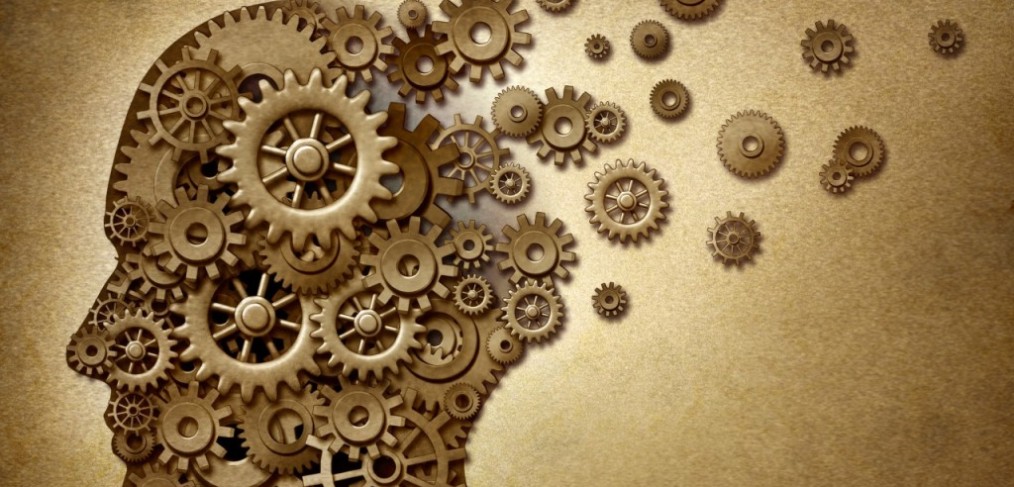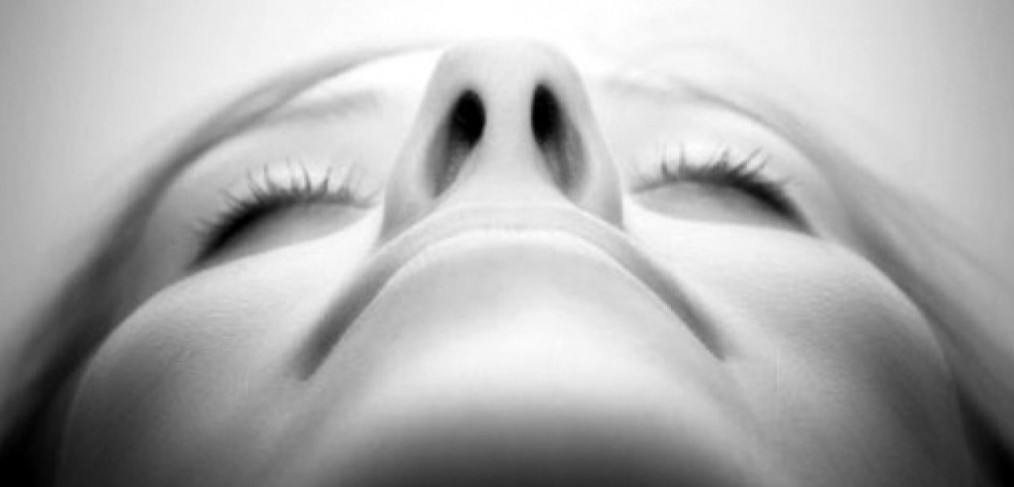There is an art to life and living, if we learn how to live it from the inside out instead of from the outside in. It requires the willingness to open our minds and hearts to our own unique, creative gifts. But, more importantly, it allows us the freedom to see through the matrix of boxes and squares and detach ourselves from controlled illusion of our reality. Then, looking from the inside out, we find that the reality of creation is actually beautifully chaotic.
Down The Rabbit Hole
As human Beings, we can become attached to all kinds of ideas of what we think we need to be happy – comfort, security, career, social circles. But when we look deep within ourselves, we realize these needs are mostly of a material and external nature. Although they can be alluring, the happiness we find in these attachments and identifications is usually temporary, as they reflect our relationship to the chaotic outside world, not our personal, peaceful inner world. Of course, when our happiness depends on conditions outside ourselves and our control, we search for completion from the outside in. Then, when those external conditions are taken away, so too is our sense of peace and fulfilment. We have lost control over our emotional being.
But everything is upside down in this beautifully chaotic rabbit hole. In our attempt to find happiness in the outside world, we often perceive external chaos as our lives “falling apart”, when really, circumstances are just starting to come together in our lives in ways we can’t comprehend.
There’s terms for this state of being and several come to mind – rock bottom, crisis, despair, and/or finding the Spirit within (a process that will crack you wide open, but that’s another article in itself). In these times, whether we can see it or not, our external attachments and identifications are stripped from us, and it is only within ourselves that we can create comfort in the chaos.
The Life Force
What we learn about love is backwards. We are raised believing we must search for love outside ourselves, find someone to love us, and find someone to love. We learn that we are alone, incomplete and loveless without the love of another.
In reality, we ARE love, in its purest form. But we are conditioned to feel separated from that true nature of love, valuing only the love we receive from outside ourselves. This leaves us open to fear, as we believe that love itself can be taken away.
Love and hate (fear) are like oil and water, so when they interact on an energetic and emotional level we often find chaos in the polarity – an allergic reaction if you will. Our loving nature and our fearful conditioning can’t co-exist. Something has to give. And in that dark and confusing place, we find rock bottom; the inky black energy of the aether, where our training and our truth collide. But, it’s also the place where we find our greatest opportunity – the creative “spark” to light our way out of the dark.
Even in our darkest and most painful times, we always have that opportunity; that choice. It’s harder to make that choice when we are in an emotional state of change because change can feel like we’re losing something, and in uncertainty, we fear what may yet be. But as we shed our external attachments, the way forward – that creative spark – can only be found in the emotion of the moment, right now, not in feelings of loss (past) or fear (future). The only way out is through.
As the old makes room for the new, our overwhelming emotions can sometimes make us feel like we can’t go on. Fear, loss and grief are all common. But what we’re feeling in those rock-bottom moments is actually the stale old toxic energy dying, not our life force! It’s no vacation, but at the end of it, we are left with new circumstances, new energy, a new perspective. On a micro level, these old energy patterns are being felt and released by individuals, while on a macro level, humanity is currently reflecting the same process — we’re at rock-bottom, feeling the chaos of this energetic clash, and using that spark to light creative new ways forward.
When we go into darkness, it’s no vacation. It helps to remember: when emotional chaos takes hold, the best remedy is simplicity. When we simplify our lives and remove subjective distractions, it brings us closer to alignment and objectivity. We become more sensitive in our perceptions. We can be still with our thoughts and feelings, while also exploring the opportunities they create. This will tell you everything you need to know – even if it feels upside down (you’re in the rabbit hole, remember?)
The Big Move
First, it helps to know that we’ve done this before even if we can’t see it, or forgot how. Through the process of shedding old energy and creating ‘the new’, we’re changing, morphing, evolving, and moving energy – the emotional kind of energy that comes with great weight, which is why the process of releasing it is called enlightenment (light bulb moment!) Although the ego part of us may attach to the feeling of loss, and resist letting go of old comfortable energy, this process of unpacking our emotional baggage Lightens our emotional load and helps us to align our energetic being to what our heart and soul essence is really searching for — change and the fear that comes with it. The whole gamut of conscious experience.
It can feel daunting, looking into our own personal rabbit hole, but don’t be scared. The darkness is part of the great aether which is the spiritual energy of creation. The aehter is the “place” and the mindset where illusions are shattered, perspectives are changed, new dreams are forged, and something beautiful and honest is born – seemingly from “nothing”.
Remember though, the “nothingness” you may experience is still something, because there is no such thing as nothing. In the heart-felt stillness of the dark, we find the presence, openness and creative spark we need to truly see our reality and consciously invigorate our lives, aligning our outer world to our inner reality and desires.
So honor the darkness for the experience that it is and the lessons it offers your heart and mind – and most of all, know that it is temporary.
To make ‘the big move’ is basically a 2-step process. First, we have to identify and connect with the fearful energy that wants to be expressed – or released. Most of us have an awareness of our fears and the patterns they create in our lives, even if we’re unsure how to process them and/or persuade them to move out. This is the process that we don’t necessarily like so much because it’s uncomfortable at best. The key is realizing that we need something to replace the fear in our heart.
When fear keeps us “stuck”, the reason we find it so hard to move is because we stop supporting the Universe to support us, by focusing our consciousness on the “what if’s” — what we don’t have, what we can’t do, what may go wrong, and often, what other people think. The ego’s perception becomes about “loss” and “want” and “fear” of the potential future; and so we lose touch with our natural sense of gratitude for now — which is a necessary ingredient for co-creating with conscious intention. But that sense of fear is not real, it is the ego trying to protect itself from the worst case “what if’s” that may or may not happen in the future, and redirecting our attention back to familiar patterns of behavior that may gratify the ego in the short term but do not serve the Self in the long term.
Then, when ego/fear prevents us from trying, or even dreaming, nothing happens at all! Today or in the future…
… and so, this is where we get “stuck”, going round and round trying to solve fearful problems in our heads, trying to resolve our fears with the same mentality that created them… more fear. It’s the emotional equivalent of banging our heads against a proverbial brick wall.
Ego is the antithesis of Oneness. Inherently fearful of the unknown, ego is hard wired into our biological flight-or-fight/fear response. It views reality in terms of separation and comparison to others, blind to the bigger picture that exists beyond its own self-oriented awareness.
The best way to resolve the fear of doing is to DO. Go ahead and prove your fearful ego wrong.
Sure, it can take great courage, discipline and self-understanding to honestly explore the dark recesses of our fears and ego. But the truth is, there is no other real option. As we continue down this path of collective and personal awakening, our unresolved ego/fears and their effects are becoming increasingly obvious in our lives, and like any other unsustainable practice, we can no longer put them aside without consequence.
It’s time we cleared the space, start a fresh canvass, and show those around us they can do the same too.
Grab a Pallette!
Our emotions ultimately tell us everything we need to know about what’s working and not working for us in our lives. When things aren’t “right”, we experience discomfort or discontent in various areas of our life. If we don’t allow these feelings to surface, and more importantly to guide our mind’s decisions, the unresolved emotional energy will always find a way to be expressed, whether the ego likes it or not. For many, the ongoing denial and apathy to such challenging feelings can culminate in a ‘dark night of the soul’, where the emotional veil suddenly drops and the full range of emotional energies demand that we feel them, and heal them, at once.
In these times, we may not like what we see when we look at the canvas of our life. Reflecting on our fears and most painful experiences forces us to be aware of the fearful, unloving, or desperate decisions we’ve made in our lives. We may not like the landscape we’ve painted, or the details in the background, or the truth about what we’ve emulated from our fear but we can change it, move it, enhance it, and color it in. First we need to step back and really see the canvas objectively – without ego – and feel the message within it. Our pain, discontent, anger and regret are all perfect indicators that we are settling for something in our lives that is not aligned with our true Being. Exploring and acknowledging the whole spectrum of our feelings is the first (and most difficult) step to healing them, and starting over, creating through the chaos.
In order to unravel the effects of our feelings and experiences in ego and fear have caused on our energetic landscape, it’s a case of going back through the darkness in order to see the Light. That’s the duality – Light doesn’t exist without dark, and the only way out is through. Follow the light. Sometimes that means we have to stop, look, and listen in order to find a heartfelt stillness enabling us to truly see what our heart, and the universe by extension, is trying to show us.
Then, when we confront our true human and spiritual nature head on and “survive” the truth of our dark side (even though our ego feared we would perish!) we emerge with a new clearer perspective — ready to create a more honest, simple, joyful, meaningful, enriching, experiential kind of life. The kind of life that is perfectly aligned to the inner Being we have come to know so well. The kind of life that is impossible to create while the ego has us convinced that what we want for ourselves is always somehow out of our reach.
Color in the Dark
Let’s be honest, our darker feelings of fear and chaos aren’t exactly easy to look at up close and personal. We learn to keep our fear hidden just beyond the periphery of our conscious awareness in order to stay “sane and functioning”. The ego’s mode of operation is like a secret agent in stealth mode encouraging the turbulence of our fear. Its very purpose is to make us aware of our own fears and/or limitations taking us into the darkness of the aether. But the darkness only obscures our view, hiding a blank canvass of infinite potential. We have something the ego doesn’t though — color, light and shade which equates to every imaginable outcome.
Creating something *NEW* is the best way to release emotional baggage and re-color our lives into a canvas we can’t wait to claim as our own and share with the world. If we allow ourselves to fully experience the dark side of our emotional existence, we can use that experience as both a motivation and a tool to create new experiences, new relationships, and new outcomes.
Our creative juices move in synchronicity with the universal flow of creation when we allow ourselves to be guided by our hearts. As we release our fears and overcome the urges of the short-sighted ego, we learn to listen to our heart and to our inner guidance. The dreamer’s dream comes to life before our very eyes and it mirrors back to us all that we truly are – beautiful, colorful, and unique Beings of light, consciously co-creating our own canvas, and transcending the darkness of the aether. Fun and rewarding, our existence suddenly becomes a vibrant colorful life when we make the choice to embody the art of life, with all its light and shade, and open ourselves to experience its endless, beautifully chaotic possibilities.
www.choki.org
Follow us on Facebook!
Author: Jennifer Deisher / Wake up World




